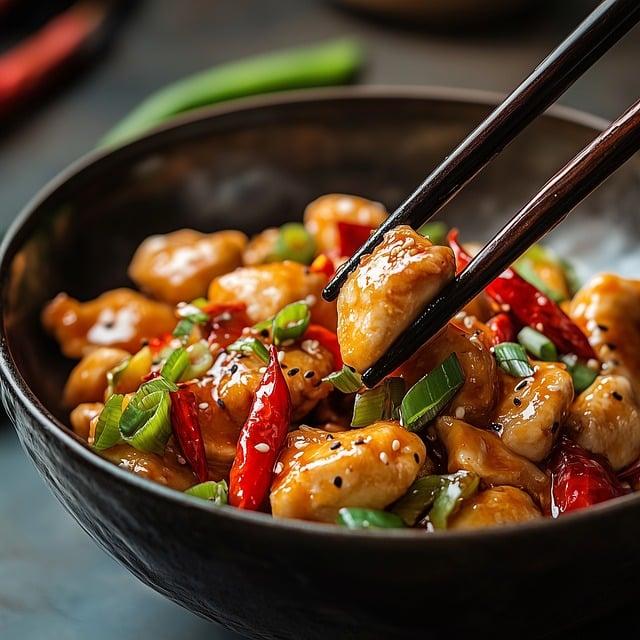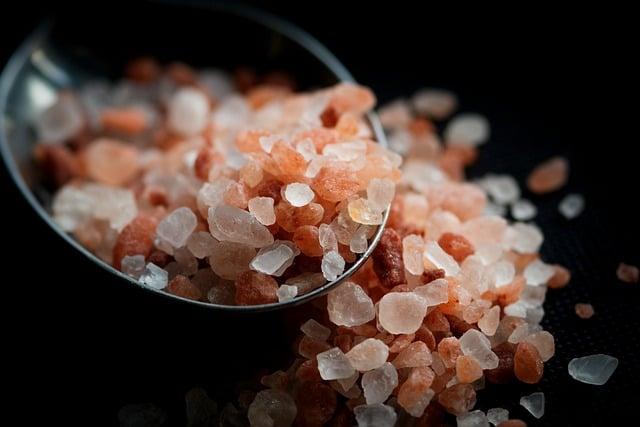As the first snowflakes danced down from the sky, the scent of cinnamon and nutmeg filled the air in a cozy German kitchen. Little Anna watched her grandmother roll out dough for Lebkuchen, the spiced gingerbread cookies that adorned their festive table. Each cookie was a work of art, decorated with icing and nuts. On Christmas Eve, the family gathered around, sharing stories and laughter, while savoring Stollen, a rich fruit bread dusted with powdered sugar. In that moment, the warmth of tradition wrapped around them like a cherished blanket, sweetening the cold winter night.
Table of Contents
- Traditional German Christmas Desserts That Delight the Senses
- Exploring Regional Variations in Festive Sweet Treats
- The Role of Spices and Flavors in German Holiday Baking
- Tips for Creating Authentic German Desserts at Home
- Q&A

Traditional German Christmas Desserts That Delight the Senses
As the festive season approaches, the aroma of baking wafts through German homes, heralding the arrival of traditional desserts that are as rich in history as they are in flavor. One of the most beloved treats is **Stollen**, a fruit-laden bread that is often dusted with powdered sugar. This dense, buttery loaf is typically filled with a medley of dried fruits, nuts, and spices, evoking the warmth of Christmas gatherings. Another classic is **Lebkuchen**, a spiced gingerbread cookie that comes in various shapes and sizes, often adorned with icing or chocolate. These cookies are not just a delight to the palate but also a feast for the eyes, making them a staple at holiday markets and family celebrations alike.
For those with a penchant for creamy desserts, **Quarkstollen** offers a delightful twist on the traditional Stollen, incorporating quark cheese for a lighter texture. Meanwhile, **Marzipan**, a sweet almond paste, is molded into festive shapes and figures, adding a touch of artistry to the dessert table. Lastly, no Christmas feast would be complete without **Punschkrapfen**, a rum-soaked pastry filled with a rich cream, often dusted with cocoa powder. Each of these desserts not only satisfies the sweet tooth but also embodies the spirit of togetherness and celebration that defines the German Christmas season.

Exploring Regional Variations in Festive Sweet Treats
As the festive season approaches, the culinary landscape of Germany transforms into a delightful array of sweet treats, each region boasting its own unique specialties. In Bavaria, for instance, the traditional Stollen takes center stage, a rich fruitcake filled with nuts, spices, and often marzipan, dusted with powdered sugar to resemble a snowy landscape. Meanwhile, in the northern regions, Spekulatius cookies, spiced with cinnamon and cloves, are a beloved staple, often shaped into festive figures that tell stories of the season. The diversity of flavors and textures reflects the rich cultural tapestry of Germany, where each bite tells a tale of local traditions and festive cheer.
In the heart of the Rhineland, the famous Lebkuchen emerges, a gingerbread-like confection that varies from soft and chewy to crisp and crunchy, often adorned with icing or chocolate. This treat is not just a dessert but a symbol of the holiday spirit, often exchanged as gifts among friends and family. Over in the eastern regions, Quarkstollen, a variation of the classic Stollen, incorporates quark cheese, lending a creamy texture that is both indulgent and comforting. Each of these desserts not only satisfies the sweet tooth but also serves as a reminder of the rich history and regional pride that permeates German Christmas celebrations.

The Role of Spices and Flavors in German Holiday Baking
During the festive season, the air in German kitchens is filled with the warm and inviting aromas of spices that evoke a sense of nostalgia and celebration. Traditional holiday baking often incorporates a rich tapestry of flavors, with **cinnamon**, **nutmeg**, and **cloves** taking center stage. These spices not only enhance the taste of beloved treats like Lebkuchen (gingerbread) and Stollen (fruit bread) but also symbolize the warmth and comfort of the season. The careful balance of these spices creates a sensory experience that transports bakers and eaters alike to a cozy winter wonderland, where each bite is a reminder of cherished family traditions.
In addition to the classic spices, the use of **vanilla**, **orange zest**, and **almond extract** adds depth and complexity to holiday desserts. These flavors are often found in popular confections such as Plätzchen (Christmas cookies) and Marzipan treats, which are meticulously crafted and beautifully decorated. The combination of sweet and spicy notes not only pleases the palate but also plays a significant role in the festive atmosphere, inviting friends and family to gather around the table. As each recipe is passed down through generations, the unique blend of spices and flavors becomes a cherished part of the holiday experience, making every bite a celebration of heritage and joy.

Tips for Creating Authentic German Desserts at Home
To bring the authentic taste of German desserts into your home, start by sourcing quality ingredients that reflect traditional recipes. **Use real butter, fresh eggs, and high-quality chocolate** to ensure your baked goods have the rich flavors characteristic of German sweets. Incorporating **spices like cinnamon, nutmeg, and cardamom** can elevate your desserts, as these are commonly used in festive treats. Don’t shy away from using **local fruits** such as apples and cherries, which are often featured in German desserts, especially during the holiday season.
When it comes to techniques, pay attention to the details that make German desserts unique. **Take your time with dough preparation**, whether you’re making a buttery Stollen or a delicate Lebkuchen. Allowing the dough to rest can enhance the texture and flavor. Additionally, **experiment with traditional toppings and fillings**; for instance, a sprinkle of powdered sugar or a drizzle of dark chocolate can add a delightful finish to your creations. Lastly, consider serving your desserts with a side of **whipped cream or vanilla ice cream**, as this is a popular way to enjoy sweets in Germany, especially during festive gatherings.
Q&A
-
What are traditional German Christmas desserts?
Germans enjoy a variety of traditional desserts during Christmas, including:
- Stollen: A fruit-filled bread, often dusted with powdered sugar.
- Lebkuchen: Spiced gingerbread cookies, often decorated with icing.
- Spekulatius: Spiced shortcrust biscuits, typically shaped with festive motifs.
- Marzipan: A sweet almond paste, often molded into festive shapes.
-
Are there any regional variations in Christmas desserts?
Yes, Germany has diverse regional specialties, such as:
- Black Forest Cake: Originating from the Black Forest region, this chocolate cake is layered with cherries and whipped cream.
- Berliner: A jam-filled doughnut popular in many areas, especially in Berlin.
-
Do Germans have specific desserts for Christmas Eve?
On Christmas Eve, many families enjoy a simple dessert, often consisting of:
- Fruitcake: A rich cake filled with dried fruits and nuts.
- Cookies: A selection of homemade cookies, often shared among family and friends.
-
Is there a significance to these desserts during Christmas?
Yes, many of these desserts have historical and cultural significance, symbolizing:
- Generosity: Sharing sweets with loved ones reflects the spirit of giving.
- Tradition: Recipes are often passed down through generations, preserving family heritage.
As the festive season unfolds, Germany’s dessert table becomes a delightful showcase of tradition and flavor. From stollen to lebkuchen, each sweet treat tells a story of heritage and celebration, inviting us all to savor the magic of Christmas.

大家好,我是彼得潘,專業的手法身體治療師。我喜歡探索和研究各種主題,並透過與人工智慧的合作分享專業、實用、有趣的文章。我們定期進行人工審核,以確保內容的準確性。如果您發現文章中有任何不準確的地方,請隨時與我們聯繫,我們會及時糾正。您可以透過 [email protected] 與我們聯繫。



